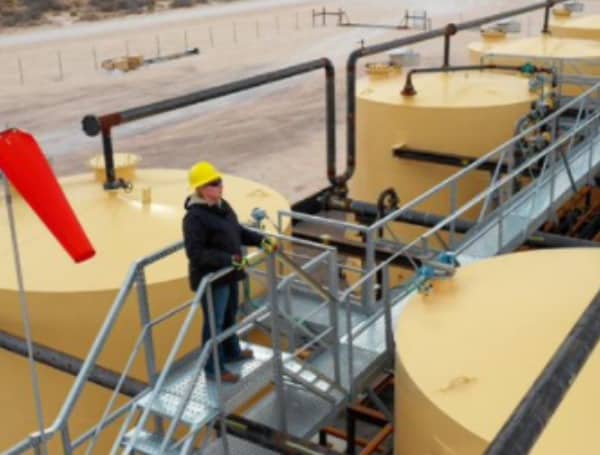It will take decades to refill the U.S. strategic petroleum reserve (SPR) after President Joe Biden released unprecedented amounts from its supply in 2022.
Aging infrastructure, higher oil prices, and budget constraints have impeded the administration’s efforts to substantially replenish the SPR after Biden tapped its supply to tame spiking energy prices in the lead-up to the 2022 midterms, according to a report from Bloomberg News.
The massive underground salt caverns that hold the SPR oil now sit half-empty with no easy route to replenishment, and experts say it could take decades to refill the reserves.
In the news: Florida AG Moody Sends Warning To DOJ On California Migrant Relo Investigation
“It would be a very slow process even if you had the money and the facilities were are all in good shape,” said John Shages, a former Department of Energy (DOE) SPR manager, according to Bloomberg. “It could take decades.”
According to Politico, Biden had authorized the release of over 211 million barrels as of December 2022 to counter spiking oil prices in the wake of Russia’s invasion of Ukraine.
These releases were almost five times larger than any previous release, and refilling the SPR to its 2009 capacity would require buying at least 300 million barrels. RELATED NEWS: Biden Admin Drains Strategic Oil Reserves To Lowest Levels In Decades
The SPR now sits at its lowest level in about 40 years, leaving the U.S. more vulnerable to price spikes in the international oil market, according to Bloomberg. Former President Gerald Ford established the SPR in 1975 as OPEC embargoed exports to the U.S. and unleashed domestic energy crises, according to the Department of Energy (DOE) website.
There is not much consensus regarding the appropriate target levels, said Benjamin Salisbury, research director at Height Capital Markets, “Do we really want to spend $7 billion or $8 billion to refill the SPR if we are still perfectly capable of producing our own oil?”
In the news: Former Virginia Cop Pleads Guilty To Forcing Teen To Have Sex With Him In Patrol Car
The 346.8 million barrels currently on hand is enough to supply about 18 days of activity in a crisis. The difficult and long road to replenishment further imperils U.S. energy security as nations of the OPEC+ cartel prepare to cut production.
The Gulf Coast salt caverns filled with SPR supply in the 1970s were designed to have a lifespan of about 25 years.
The caverns are meant for five drawdowns and refills, and every subsequent use increases the risk that they will dissolve, said Hoot Gibson, the reserve’s former project manager.
The DOE indicated that it is not concerned about the structural integrity of the salt caverns. The administration’s choice to take advantage of the SPR in 2022 drew fierce criticism from Republican officials, who highlighted the move as an act of “abuse” and beneficial to Chinese interests.
According to Bloomberg, the price per barrel hovered around $30 when the reserve was first filled in the late 1970s to insure against international market manipulation by adversarial countries.
The continuous contract price for Brent crude oil futures stood at just under $79 per barrel at the time of publication.
The DOE and the White House did not respond immediately to requests for comment.
Android Users, Click To Download The Free Press App And Never Miss A Story. Follow Us On Facebook and Twitter—signup for our free newsletter.
We can’t do this without your help; visit our GiveSendGo page and donate any dollar amount; every penny helps
